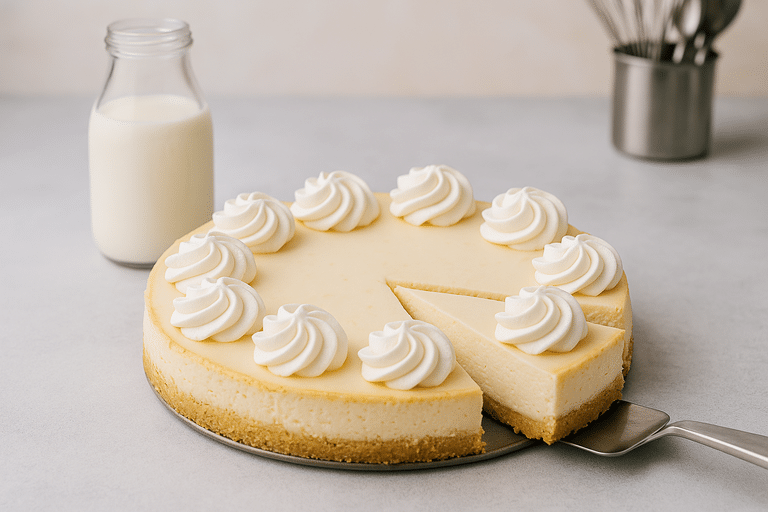If you’ve ever tasted a slice of smooth, creamy cheesecake, you’re already familiar with the magic of Philadelphia cheesecake filling. In this article, we’ll explore everything from what makes this classic filling so irresistible to tips for achieving a flawless bake. We’ll dive into ingredient tricks, baking techniques like water baths, and even no‑bake uses. Whether you’re a seasoned baker or trying cheesecake for the first time, this guide is here to help. Ready to master that silky filling and bake your best cheesecake yet? Let’s get started!
Table of Contents
The Story & Intro – why “philadelphia cheesecake filling” matters
A family tradition hidden in every creamy bite
I’ll never forget the first time I watched my grandmother prepare her cheesecake—it wasn’t just dessert, it was an event. She always reached for that iconic Philadelphia cream cheese, whispering that it held the secret to her “philadelphia cheesecake filling.” The silky texture, the mild tang—it was more than flavor; it was memory. As I grew older, I realized this wasn’t just nostalgia. Using the philadelphia cheesecake filling technique consistently delivers a dense yet velvety center, perfect for feeding family and sparking conversations.
What makes Philadelphia cream cheese the star of the show
When I discovered that the foundation of your favorite cheesecake lies in that punchy, high‑fat cream cheese, I knew I’d found the key ingredient. The fat content in Philadelphia cream cheese gives the filling structure without compromising on creaminess. That’s why bakers worldwide turn to it for their favorite desserts—from classic cheesecake to fruity swirls. Throughout this article, we’ll highlight the vitality of using top‑quality cream cheese. We’ll also reference our guide on water‑bath baking techniques to avoid cracks, and share tips from our no‑bake cheesecake filling ideas page to give your baking journey extra confidence.
Understanding Different “philadelphia cheesecake filling” types
Classic baked filling vs. no‑bake variation
The traditional Philadelphia cheesecake filling shines when baked—the gentle heat transforms the mixture into a creamy, slightly dense texture. You start with room‑temperature Philadelphia cream cheese, sugar, eggs, and optional vanilla or almond extract. That leads to the recognizable richness we love. By contrast, the no‑bake version skips the oven entirely and relies on chilling to set. It uses gelatin or whipped cream to help the filling firm up. Both approaches showcase the unique creaminess of Philadelphia cream cheese, but they cater to different moods—warm, roasted flavors or cool, light indulgence. If you’re curious, you can find variations in our section on no‑bake cheesecake filling ideas, straight from DulciaRecipes.com.
Tips to customize your filling flavor and texture
Want to boost flavor while keeping that flawless Philadelphia cheesecake filling core? Small tweaks can go a long way. Add an extra egg yolk for a richer, more custard‑like texture, or swirl in fruit purées before baking for beautiful visual appeal and fruity notes.
You might even fold in sour cream or crème fraîche at the end to smooth the batter and help reduce cracking potential. If you aim for tangier notes, try swapping in a teaspoon of lemon or lime zest—our recipe troubleshooting guide explains how balance matters in cheesecake.
Always remember: smooth, lump‑free filling starts with proper mixing and room‑temperature ingredients. For more on preparing cream cheese quickly (especially when you forgot to set it out ahead of time), see our tip on softening cream cheese in the microwave.
Serve as is, or top with fresh berries, pie filling, or whipped cream for a delightful finish.
Mastering Technique for Perfect “philadelphia cheesecake filling”
Print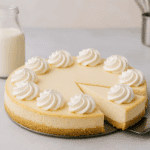
Philadelphia Cheesecake Filling Recipe: Creamy, Classic & Foolproof
- Total Time: 6 hours
- Yield: 1 9-inch cheesecake 1x
- Diet: Vegetarian
Description
A rich, creamy Philadelphia cheesecake made from scratch with a buttery graham cracker crust and velvety filling. Perfect for holidays or cozy weekends.
Ingredients
1 ¼ cups graham cracker crumbs
¼ cup melted butter
3 8-ounce packages Philadelphia cream cheese, softened
¾ cup sugar
3 eggs
1 tsp vanilla extract or ¼ tsp almond extract (optional)
Instructions
1. Gather your ingredients and set everything within reach.
2. In a mixing bowl, combine softened cream cheese, sugar, and vanilla extract.
3. In a separate bowl, pour melted butter over graham cracker crumbs.
4. Mix the butter and crumbs thoroughly until evenly moistened.
5. Press the mixture into a 9-inch springform pan to form the crust.
6. Blend the cream cheese mixture until smooth and creamy using a hand mixer.
7. Crack eggs into a small bowl, then add them one at a time into the batter, mixing gently.
8. Pour the cheesecake filling into the prepared crust in the pan.
9. Wrap the pan in foil and bake at 350ºF for 35–45 minutes, until the center slightly jiggles.
10. Cool the cheesecake in the turned-off oven with the door cracked open for 30 minutes.
11. Refrigerate for at least 4 hours before serving.
12. Slice and serve with whipped cream or fresh berries, if desired.
Notes
Avoid over-mixing after adding eggs to reduce cracks.
Use a water bath for even baking and smoother texture.
Let cheesecake sit at room temperature 20 minutes before serving.
Store leftovers in the fridge for up to 4 days or freeze for longer storage.
- Prep Time: 20 minutes
- Cook Time: 45 minutes
- Category: Dessert
- Method: Baking
- Cuisine: American
Nutrition
- Serving Size: 1 slice
- Calories: 236
- Sugar: 18g
- Sodium: 187mg
- Fat: 15g
- Saturated Fat: 8g
- Unsaturated Fat: 5g
- Trans Fat: 0.2g
- Carbohydrates: 23g
- Fiber: 0.3g
- Protein: 4g
- Cholesterol: 77mg
Achieving a crack‑free surface with the right bake
One of the biggest fears when baking a cheesecake is visible cracks in your Philadelphia cheesecake filling. Thankfully, a gentle water bath can keep the temperature steady and the edges from drying out.
To set up a water bath, wrap the outside of your springform pan with aluminum foil, then place the pan in a larger baking dish. Pour in hot water until it comes halfway up the side of the cheesecake pan.
This process helps the filling cook evenly and rise slowly. After 35–45 minutes at 350 °F, the center should still jiggle slightly—aim for about 145 °F on an instant‑read thermometer.
Let the cake cool in the turned‑off oven with the door cracked for 30 minutes, then refrigerate. That slow transition prevents sudden temperature changes, keeping the filling dense, smooth, and crack-free.
Speed‑softening Philadelphia cream cheese correctly
Using room‑temperature cream cheese is essential for smooth Philadelphia cheesecake filling with no lumps. If you forget to take it out ahead of time, the microwave trick saves the day. Cut blocks of Philadelphia cream cheese into smaller pieces and microwave for short bursts—10 seconds at a time—rotating in between until the center just softens. Don’t overdo it, or the texture can split. Softened cream cheese blends effortlessly with sugar and eggs, giving your filling that rich, velvety mouthfeel we all crave. Check our section on softening cream cheese in the microwave for exact timing and warnings against overheating.
How to Make Philadelphia Cheesecake Filling (Detailed Step-by-Step)
Creating a flawless Philadelphia cheesecake filling at home is simple with the right steps and high-quality ingredients. Here’s how to do it:
Ingredients
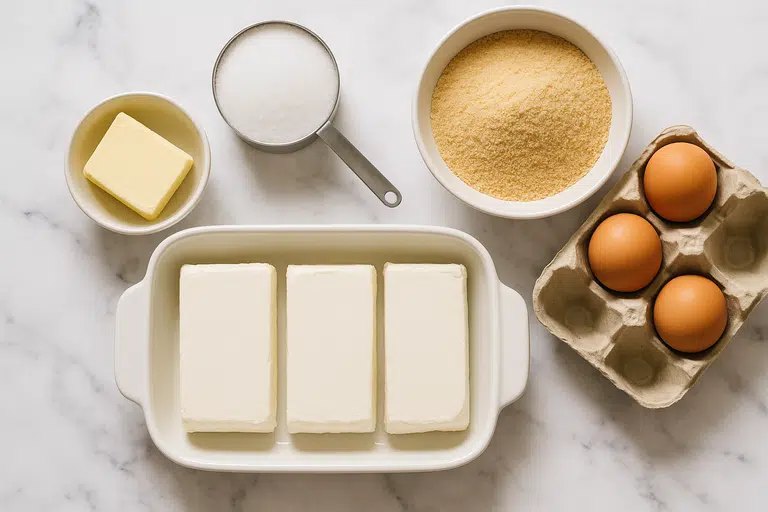
- 1 ¼ cups graham cracker crumbs
- ¼ cup melted butter
- 3 (8-ounce) packages Philadelphia cream cheese, softened
- ¾ cup sugar
- 3 large eggs
- Optional: 1 tsp vanilla extract or ¼ tsp almond extract
Instructions
Step 1: Add Vanilla to the Cream Cheese and Sugar
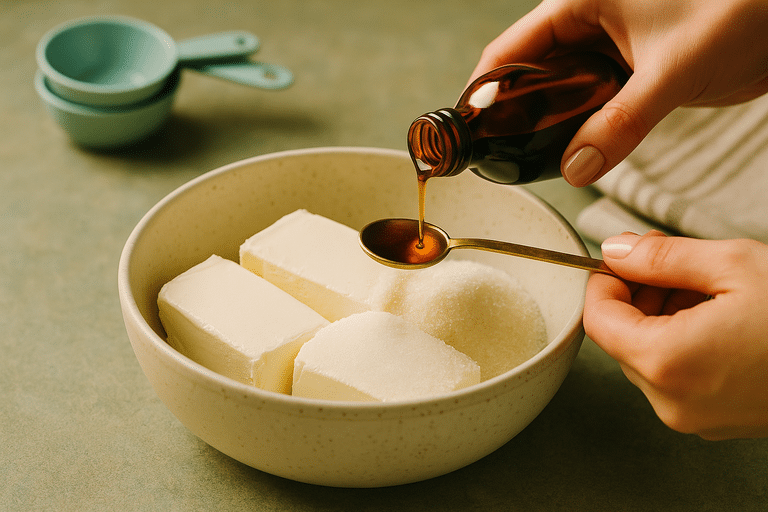
In a large bowl, combine the softened Philadelphia cream cheese with sugar. Then pour in your vanilla extract. This builds the flavorful base of the cheesecake.
Step 2: Pour Melted Butter into Graham Cracker Crumbs
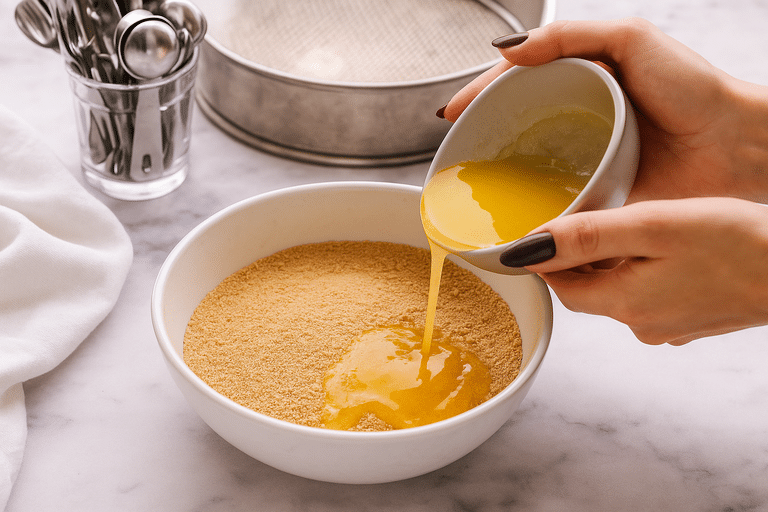
In a separate bowl, pour melted butter over your graham cracker crumbs. This is the beginning of your crust—simple and flavorful.
Step 3: Mix the Graham Cracker Crust
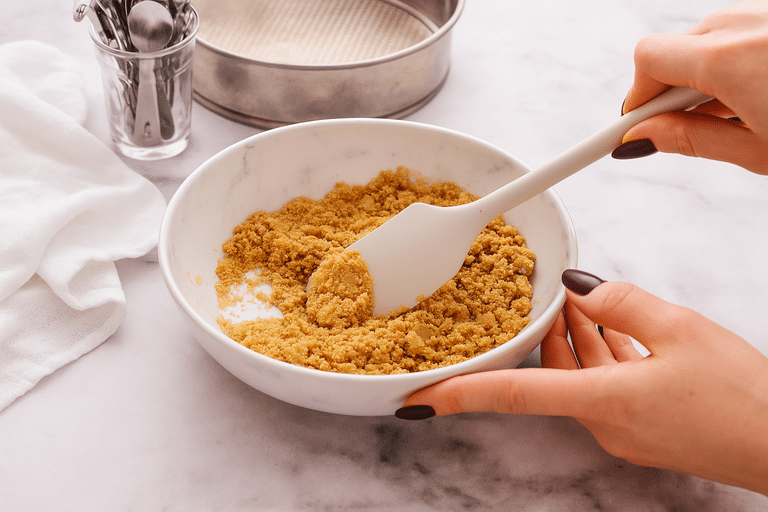
Use a spatula to mix the butter and crumbs thoroughly until evenly moistened. It should resemble wet sand in texture.
Step 4: Press Crust into Springform Pan
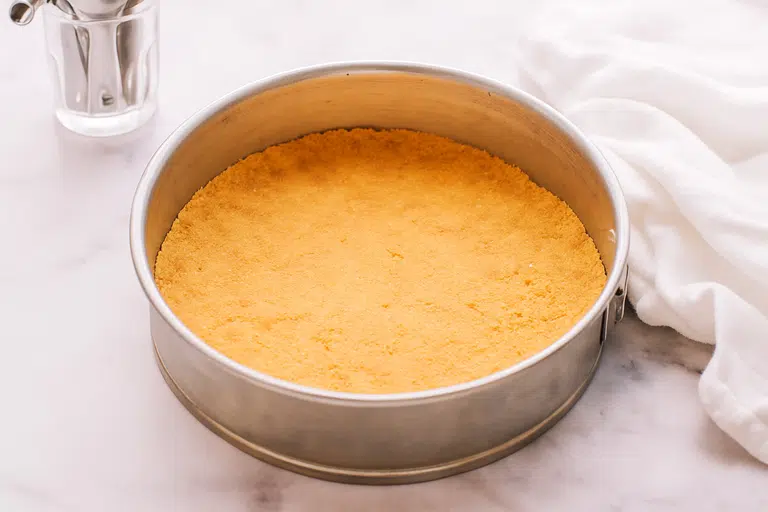
Transfer the crust mixture to a 9-inch springform pan. Press it firmly and evenly into the bottom to create a solid base for your cheesecake.
Step 5: Beat the Cream Cheese Filling
With a hand mixer, blend the cream cheese, sugar, and vanilla until the mixture is smooth and creamy. Avoid over-mixing to prevent air bubbles.
Step 6: Add the Eggs One at a Time
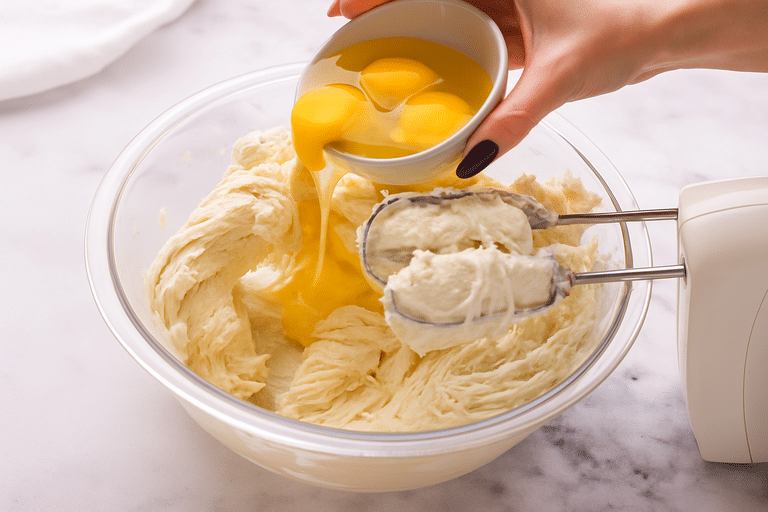
Crack the eggs into a small bowl, then add them to the cream cheese mixture one at a time. Mix on low speed just until each egg is combined—this step is crucial for a silky, crack-free texture.
Step 7: Pour the Batter into the Prepared Crust
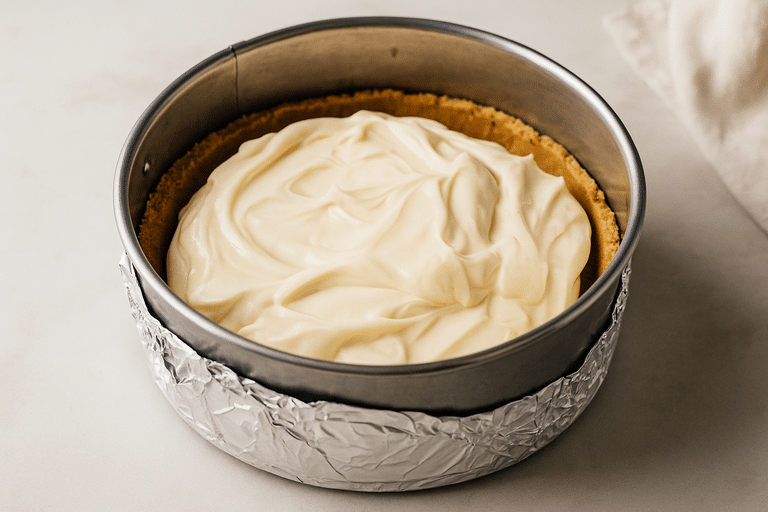
Pour the finished cheesecake filling into the foil-wrapped springform pan over the pressed crust. Smooth the top with a spatula if needed.
Step 8: Bake and Chill
Bake at 350°F for 35–45 minutes, until the center is just slightly jiggly and reaches about 145°F on a thermometer. Turn the oven off, crack the door, and let the cheesecake cool gradually for 30 minutes. Then transfer to the fridge for at least 4 hours.
Step 9: Slice and Serve
Once chilled, run a knife around the edge of the pan and remove the springform ring. Top with whipped cream or fruit if desired. Slice and enjoy your luscious homemade Philadelphia cheesecake.
Serving, Storing & Troubleshooting Your “philadelphia cheesecake filling”
Serving suggestions to enhance every slice
Once your cheesecake has chilled for at least 4 hours, you’re ready to serve that flawless Philadelphia cheesecake filling. Let it sit at room temperature for about 20 minutes to soften slightly—this brings out the creamy texture. Then, top it with options like fresh berries, fruit pie filling, or a dollop of homemade whipped cream. Alternatively, drizzle fruit coulis or caramel sauce for elegant flavor contrast. If you want a slice that wows visually and tastes divine, check out our best topping combinations guide for pairing ideas. These finishing touches elevate the classic cheesecake and help balance sweetness beautifully.
Storage advice & how to fix common issues
Leftover slices of cheesecake with that perfect Philadelphia cheesecake filling will stay fresh in the fridge for up to 4 days. Store it covered or in an airtight container to prevent drying out. For longer storage, wrap individual slices in plastic wrap and freeze for up to a month—just thaw in the fridge before serving. If you notice your filling isn’t as creamy next day, a quick whisk of whipped cream on top can revive the texture. Faced with cracks or uneven texture? Our cheesecake troubleshooting tips offers insight—like gently blending edges back in or topping your cheesecake with fresh fruit to hide minor imperfections.
Frequently Asked Questions
What is Philadelphia cheesecake filling?
Philadelphia cheesecake filling is a rich, creamy mixture made primarily with Philadelphia cream cheese, sugar, and eggs. It’s used as the main component in baked and no‑bake cheesecakes. Its smooth texture and mild tang give the dessert its classic flavor and indulgent mouthfeel.
Does Philadelphia cream cheese still make cheesecake filling?
Yes, Philadelphia still offers pre‑made cheesecake filling in tubs, typically found in the dairy section of grocery stores. However, many bakers prefer making it from scratch using Philadelphia cream cheese for a fresher taste and customizable flavor.
What is the filling in a cheesecake?
The filling in a cheesecake generally includes cream cheese, sugar, and eggs. Optional ingredients like sour cream, extracts, or citrus zest can be added to enhance the texture and flavor. Using Philadelphia cream cheese is a popular choice due to its creamy consistency and reliable performance.
Can you eat Philadelphia no bake cheesecake filling by itself?
Absolutely. Philadelphia no‑bake cheesecake filling can be eaten right from the container. It’s sweet, creamy, and satisfying on its own or paired with graham crackers, fruit, or as a topping for other desserts.
Conclusion
Philadelphia cheesecake filling isn’t just a baking staple—it’s the heart of many family gatherings and celebrations. From the moment you blend that first batch to the final chilled slice, this filling offers versatility and unbeatable flavor. Whether you prefer baked or no‑bake versions, the techniques and tips shared here will help you achieve that perfect, velvety texture every time. Let your cheesecake journey continue on DulciaRecipes.com, where more classic dessert ideas and cream cheese baking tips await. Don’t forget to try your own twist and share your results—because nothing brings people together like a perfect cheesecake.

